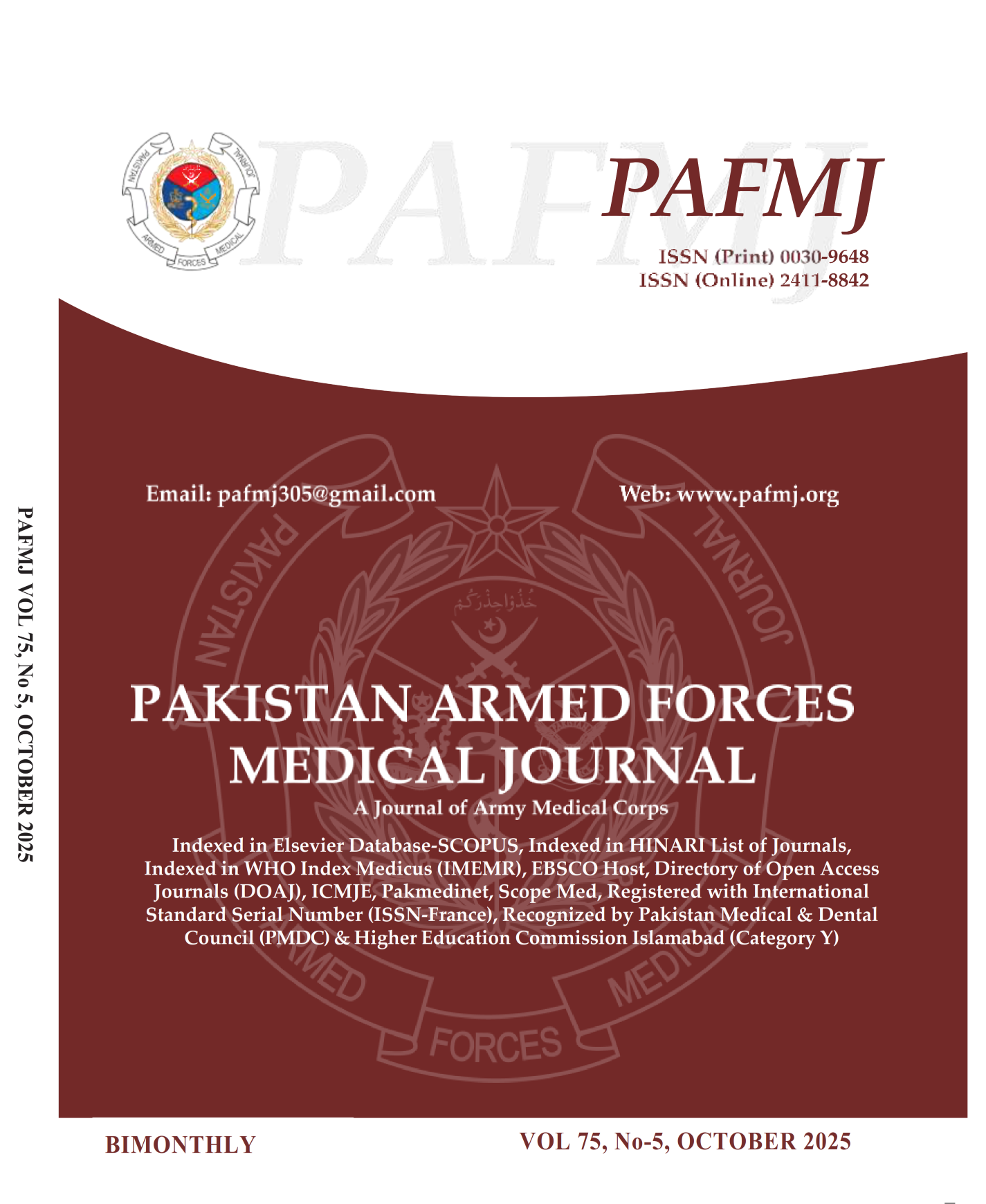Glutaric Acidemia Type-1: A Metabolic Challenge
DOI:
https://doi.org/10.51253/pafmj.v75i5.10686Keywords:
Glutaric Acidemia type-1; Inherited Metabolic disorders; GCDH genesAbstract
Glutaric Acidemia Type-1 (GA-1) is characterized by glutaryl-CoA dehydrogenase (GCDH) impairment. This enzyme deficit causes harmful metabolites, particularly glutaric acid, to accumulate in affected persons' tissues and fluids. We report a case series of four patients in our study with complaints of macrocephaly, poor head holding, and gross developmental delay. On the biochemical analysis, they had elevated levels of GA in urine organic acid level which confirmed the presence of GA type-1.
Downloads
References
1. Lin Y, Wang W, Lin C, Zheng Z, Fu Q, Peng W, et al. Biochemical and molecular features of Chinese patients with glutaric acidemia type 1 detected through newborn screening. Orphanet J Rare Dis 2021; 16(1): 339. https://doi.org/10.1186/s13023-021-01964-5
2. Wajner M, Amaral AU, Leipnitz G, Seminotti B. Pathogenesis of brain damage in glutaric acidemia type I: Lessons from the genetic mice model. Int J Dev Neurosci 2019; 78: 215-221.
https://doi.org/10.1016/j.ijdevneu.2019.05.005
3. Strauss KA, Williams KB, Carson VJ, Poskitt L, Bowser LE, Young M, et al. Glutaric acidemia type 1: treatment and outcome of 168 patients over three decades. Mol Genet Metab 2020; 131(3): 325-340. https://doi.org/10.1016/j.ymgme.2020.09.007
4. Zhang Y, Li H, Ma R, Mei L, Wei X, Liang D, et al. Clinical and molecular investigation in Chinese patients with glutaric aciduria type I. Clinica Chim Acta 2016; 453: 75-79.
https://doi.org/10.1016/j.cca.2015.12.003
5. Boy N, Mengler K, Heringer-Seifert J, Hoffmann GF, Garbade SF, Kölker S. Impact of newborn screening and quality of therapy on the neurological outcome in glutaric aciduria type 1: a meta-analysis. Genet Med 2021; 23(1): 13-21.
https://doi.org/10.1038/s41436-020-00971-4
6. Korman SH, Jakobs C, Darmin PS, Gutman A, van der Knaap MS, Ben-Neriah Z, et al. Glutaric aciduria type 1: clinical, biochemical and molecular findings in patients from Israel. Eur J Paediatr Neurol 2007; 11(2): 81-89.
https://doi.org/10.1016/j.ejpn.2006.11.006
7. Cornelius LP, Raju V, Julin A. Pediatric glutaric aciduria type 1: 14 cases, diagnosis and management. Ann Indian Acad Neurol 2021; 24(1): 22.
https://doi.org/10.4103/aian.aian_42_20
8. Gürbüz BB, Yılmaz DY, Coşkun T, Tokatlı A, Dursun A, Sivri HS. Glutaric aciduria type 1: genetic and phenotypic spectrum in 53 patients. Eur J Med Genet 2020; 63(11): 104032.
https://doi.org/10.1016/j.ejmg.2020.104032
9. Sanju S, Tullu MS, Seshadri N, Agrawal M. Glutaric Aciduria Type 1: a case report and review of literature. J Pediatr Intensive Care 2021; 10(1): 65-70.
Downloads
Published
Issue
Section
License
Copyright (c) 2025 Muhammad Usman Munir, Monaza Batool, Muhammad Qaiser Alam Khan, Nisar Ahmed

This work is licensed under a Creative Commons Attribution-NonCommercial 4.0 International License.















